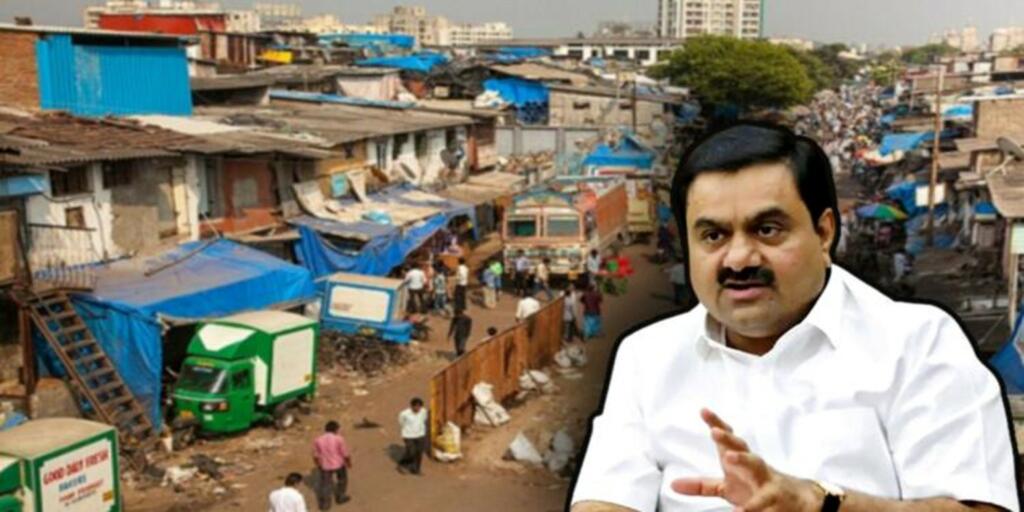Dharavi Redevelopment Project: The industrial revolution magnified the development of urban centers and facilitated migration into the cities. The social order shifted from the traditional agrarian arrangement to the modern urban diarchy. As a consequence, the urban centers devolved into elite posh communities and the hunger-struck impoverished slum dwellers. That’s how the concept of slums evolved in the United Kingdom. The first recorded incidents dates back to 1840, when the elites of Manchester and London started to visit the slums in the backward area.
The ludicrous fascination of slum tourism soon propagated to other affluent societies of the world. The intellectual elites thereby, documented the miseries of the slum dwellers and booked immense profits by producing literature on the subject matter. In next to no time, the non-profit organizations kicked in the rat race of slum tourism, thereby creating an international ecosystem for the same.
Dharavi dwellers to be ‘Slumdog millionaire’
Dharavi, one of Asia’s largest slums, lies in the heart of the financial capital of Mumbai. The place has of late become a tourist destination. In a recent development, the Adani Group has succeeded in the bid for the long-delayed Dharavi redevelopment project. The Dharavi Redevelopment project is proposed to transform the mammoth slum cluster, located on primary commercial land in Mumbai.
SVR Srinivas, Chief Executive officer of the Dharavi Redevelopment Project, corroborated the development to The Indian Express and said, “The Adani group quoted Rs 5,069 crore for this project, followed by Rs 2,025 crore quoted by the DLF group. Only Adani and DLF qualified in the final bidding. The third, Naman Group, couldn’t make it.
Adani’s Dharavi redevelopment project
Dharavi is located in the Bandra-Kurla Complex, the richest business district of India. The slum extends over an area of 2.8 sq km with an estimated population of one million and is an abode to the informal leather and pottery industry. The present Dharavi Redevelopment project is the fourth attempt in the past 15 years by the Maharashtra government.
With the development project, the state government had envisioned transforming the slums into a concrete cluster of high-rises with enhanced urban infrastructure. As per the aforementioned report, the state entails to resettle 68,000 people including slum dwellers and the commercial establishments. The state intends to provide 300-sqft houses for free to residents with proof that their slum structure was in existence prior to January 1st, 2000 and for a requisite price to those who settled in Dharavi between 2000 and 2011.
End of slum tourism in Dharavi
The redevelopment of the Dharavi slums happens to be the largest and most favored cite for slum tourism would end the ‘elite mocking the vulnerable’ culture. The poor dwelling in the slums would be provided with better housing and infrastructural landscape, in exchange for their property. This would be a radical shift in enhancing their way of living and would in a great way uplift them of their sorrows.
However, the Dharavi Redevelopment project would end the ‘vulture tourism’ of mocking the poor and would be a lost opportunity for the people who feed on producing documentation of literature on the issue. Further, the elites who derived ‘masochistic kick’ from the misery of the slum dwellers will no longer have a tourist destination in Dharavi slums.
That is to say, the west which takes moral high ground on every crisis has in fact left no opportunity to mock and derive commercial gains from such miseries. The intellectual classes of the west who inflicted the menace of holocaust, apartheid, and colonial havocs amongst numerous other grave crimes against humanity. The concept of ‘slum tourism’ is nothing more than ‘vulture tourism’ through which these ‘elites advocating social cause’ make immense money by drawing people to experience the miseries of the modern industrial misadventures. On the other hand, the ‘cartel of intellectuals’ in the developing and underdeveloped nations provides a happy tourist ecosystem to these western audiences. As a result of which the reputation and glory of the nation is portrayed in bad light. There by subjugating the culture of the host nation in comparison to the western world.
Support TFI:
Support us to strengthen the ‘Right’ ideology of cultural nationalism by purchasing the best quality garments from TFI-STORE.COM
